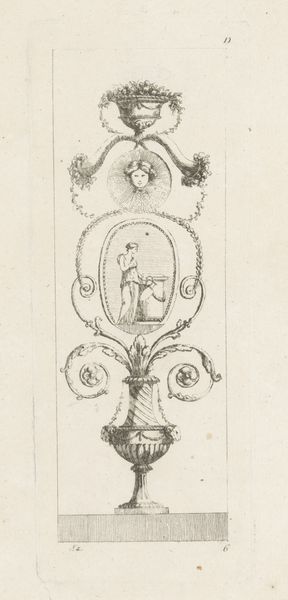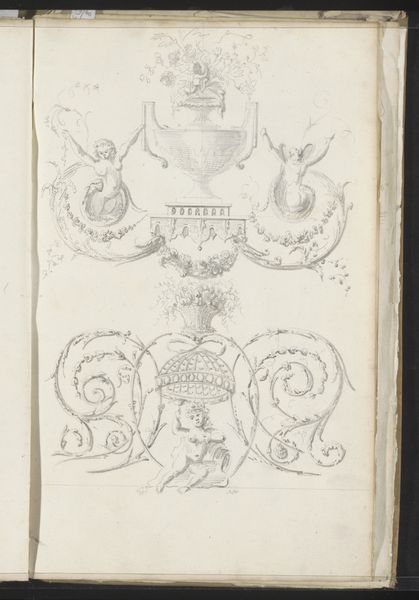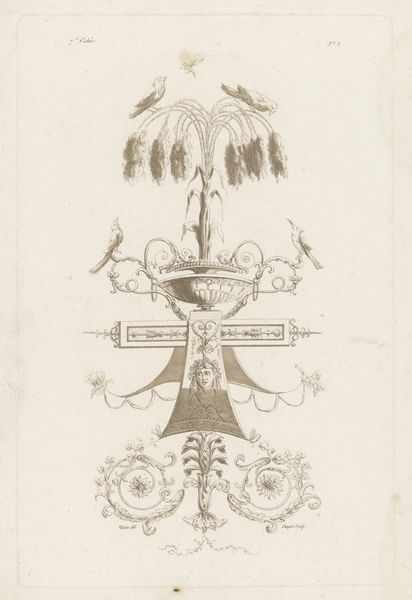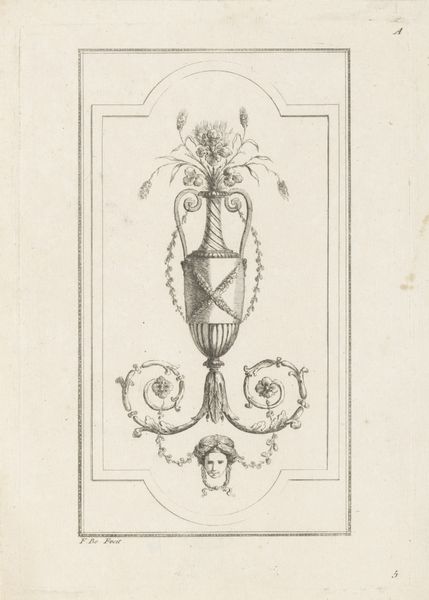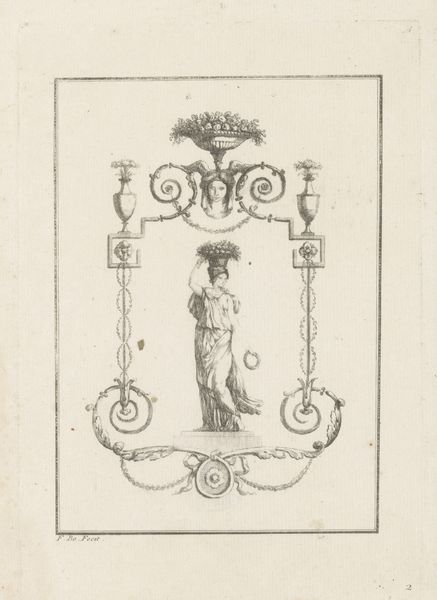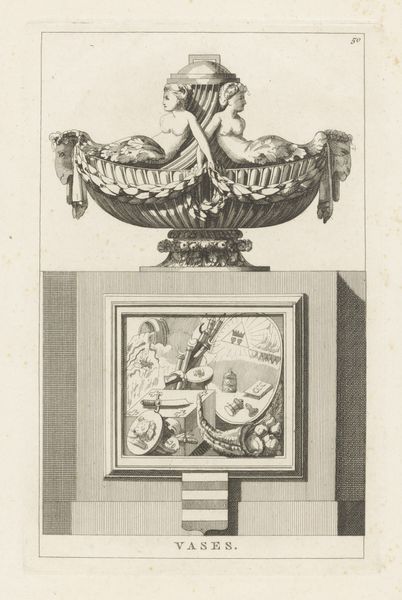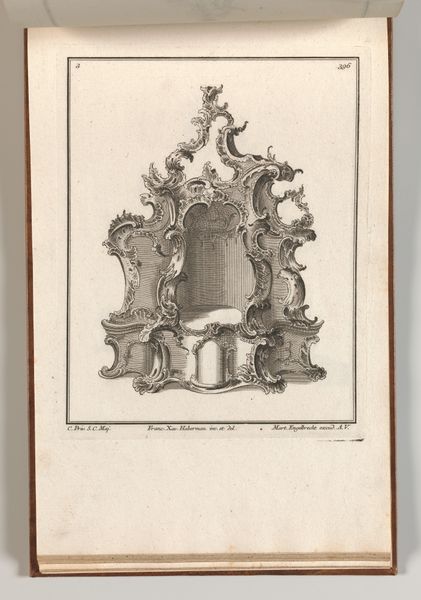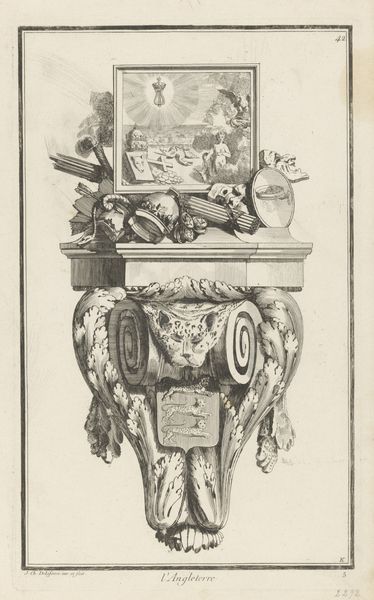
Dimensions: height 207 mm, width 82 mm
Copyright: Rijks Museum: Open Domain
This print, "Vazen en meerminnen", was made by Juste Nathan Boucher in the 18th century. It’s a relatively simple etching, meaning the artist would have used a sharp needle to draw into a wax-covered metal plate, which was then submerged in acid. The incised lines would hold ink, and the image then transferred to paper through a printing press. Now, what’s interesting is the image itself: a series of vessels, mermaids, and decorative garlands. This wasn't conceived as an artwork in the modern sense, but a design to be reproduced on luxury objects made of porcelain or silver. The print is not the end product, but an intermediate stage in a wider circle of production and consumption. Consider the labor involved in realizing Boucher’s design in three dimensions. The skilled hands needed to translate the two-dimensional etching into a porcelain vase. The process highlights the often-overlooked relationship between printmaking, design, and the decorative arts in the 18th century.
Comments
No comments
Be the first to comment and join the conversation on the ultimate creative platform.

